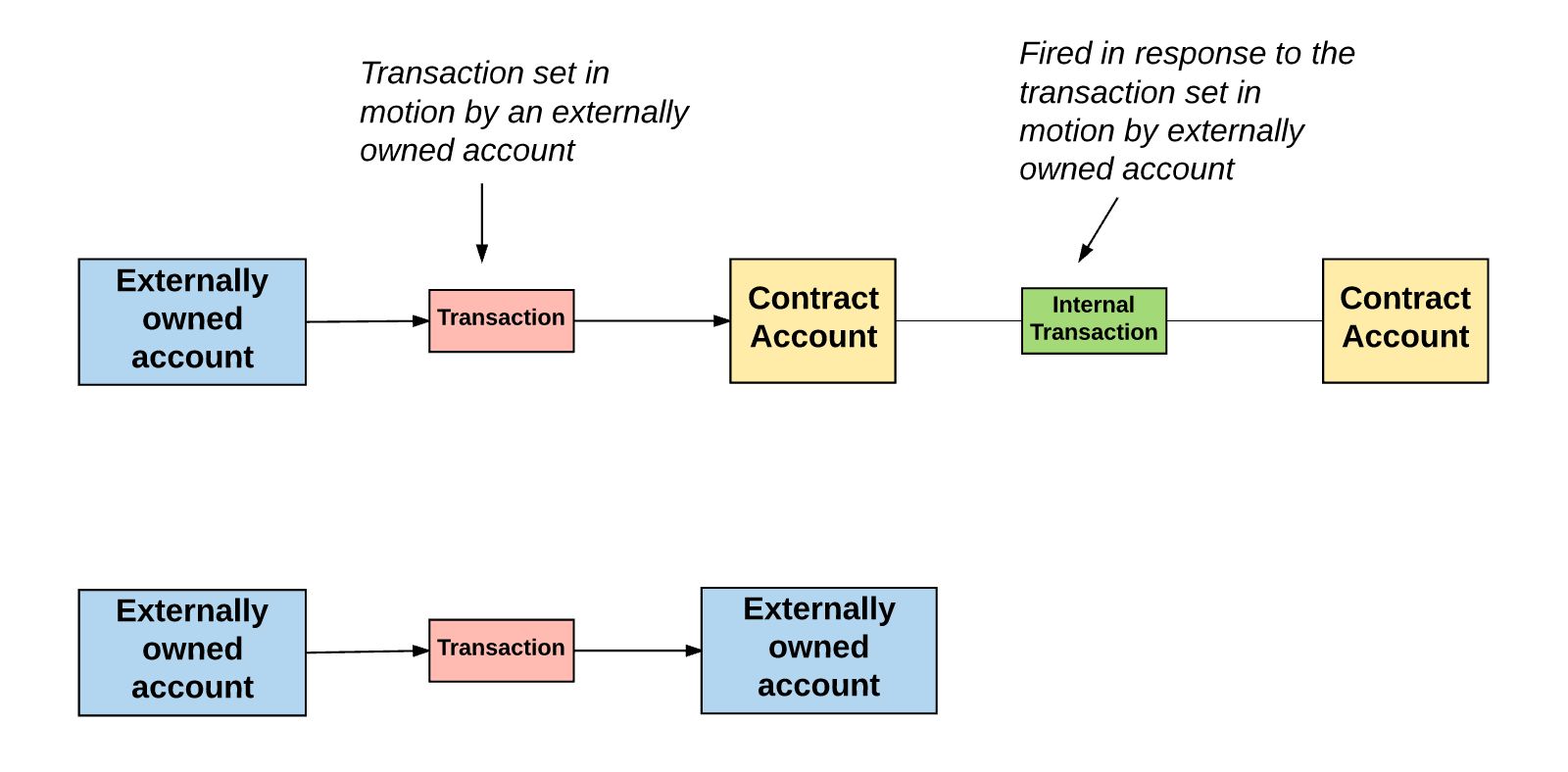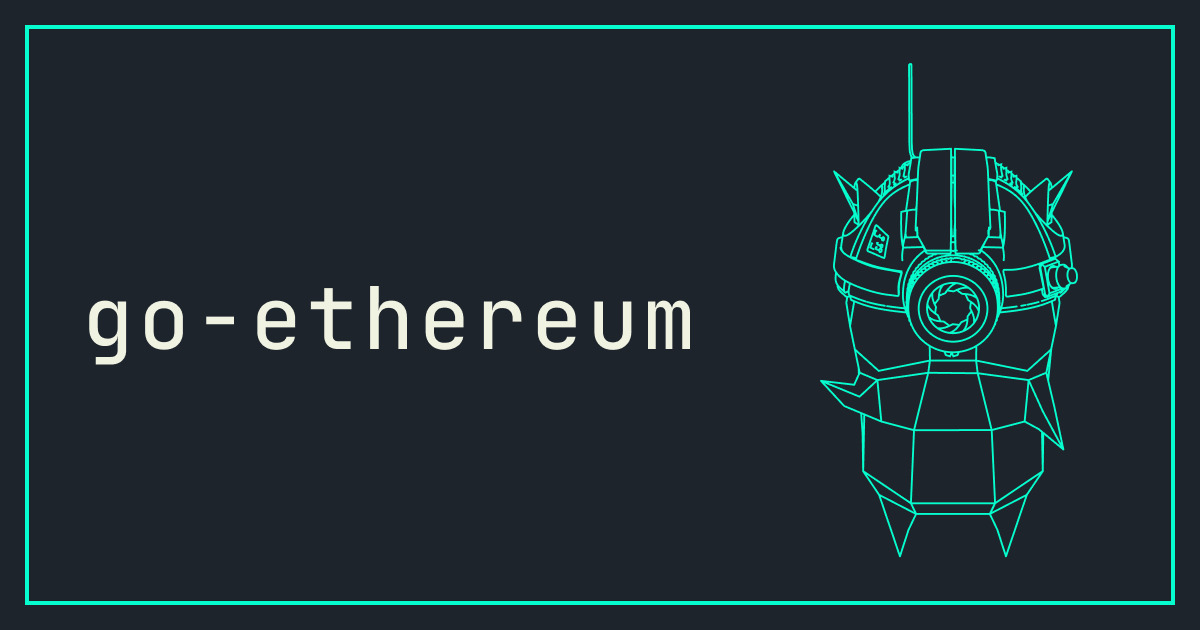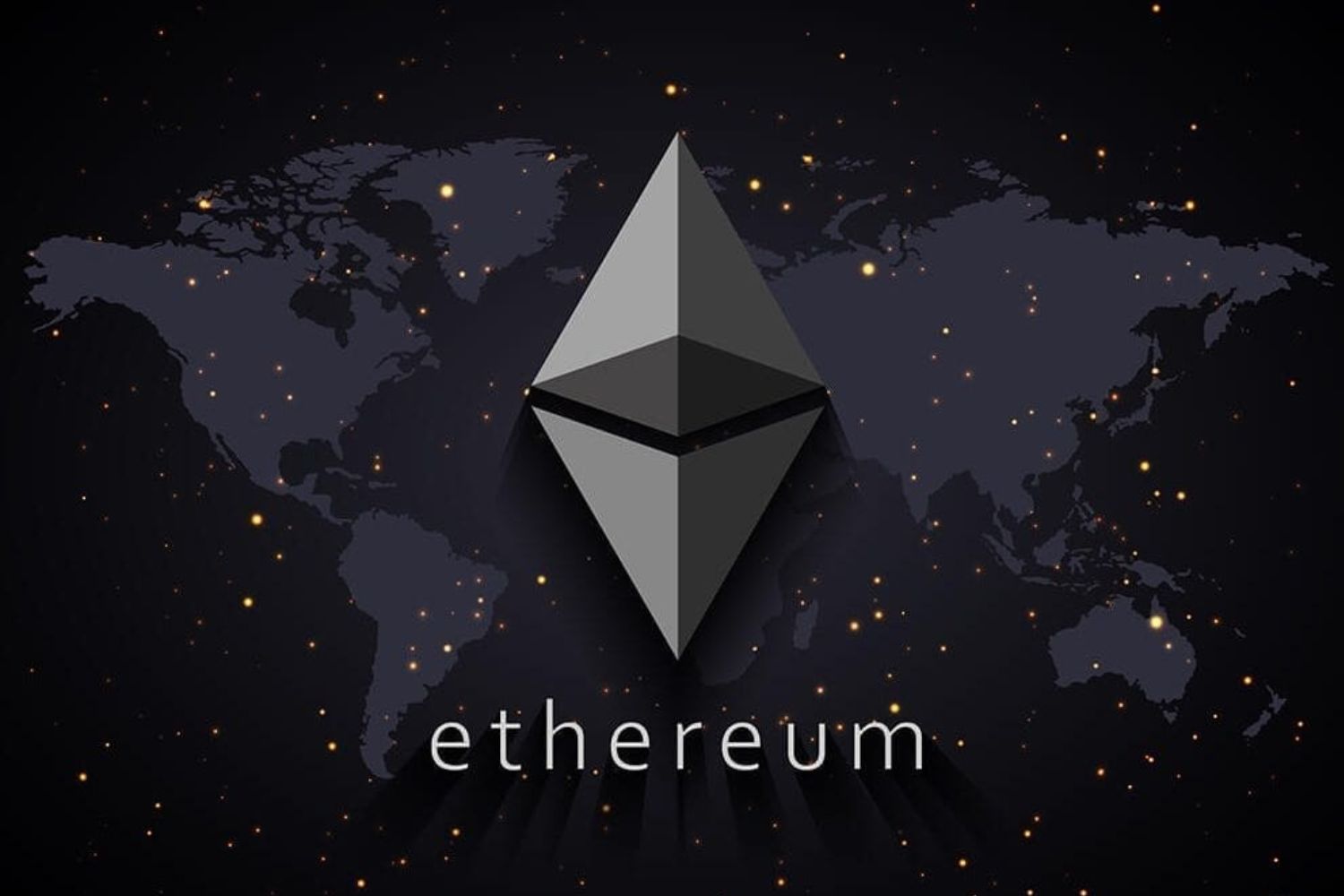Introduction
Welcome to the world of Ethereum, where innovation meets decentralization. In this article, we will explore the fascinating world of Ethereum blockchain and take a closer look at how it works. Whether you’re a curious newbie or a tech-savvy individual, understanding the underlying technology of Ethereum can open up a whole new realm of possibilities.
Ethereum is a decentralized, open-source blockchain platform that enables developers to build and deploy smart contracts and decentralized applications (DApps). It was created in 2015 by Vitalik Buterin, a young prodigy in the world of cryptocurrencies. Since its inception, Ethereum has gained massive popularity and has become the second-largest cryptocurrency by market capitalization, second only to Bitcoin.
The Ethereum blockchain is revolutionary because it not only supports a native cryptocurrency called Ether (ETH), but it also enables the execution of programmable smart contracts. These smart contracts are self-executing agreements that automatically enforce the terms and conditions defined within the code, eliminating the need for intermediaries.
The Ethereum blockchain works on a peer-to-peer network of computers, known as nodes, which collectively maintain a distributed ledger of all transactions and smart contracts. Unlike traditional centralized systems, where a single authority controls the data, the Ethereum blockchain is decentralized, transparent, and resistant to censorship.
At its core, Ethereum blockchain operates on a concept known as “proof of stake.” Instead of relying on costly and energy-intensive mining like Bitcoin, Ethereum validators, also known as “stakers,” use their Ether holdings to secure the network. This new mechanism not only reduces energy consumption but also makes the Ethereum network faster and more scalable.
With the introduction of the Ethereum Virtual Machine (EVM), developers can now write smart contracts using Solidity, Ethereum’s programming language. The EVM acts as a runtime environment that executes the smart contract code, ensuring that all nodes in the network reach consensus on the results.
One of the key advantages of Ethereum is the concept of decentralization. The Ethereum blockchain removes the reliance on centralized authorities, giving users more control over their data and eliminating the risk of censorship or single point of failure. This opens up a wide range of possibilities, from decentralized finance (DeFi) applications to decentralized social networks and much more.
In this article, we will delve deeper into the inner workings of the Ethereum blockchain, including how smart contracts are created and executed, the role of gas in transaction processing, and the advantages and disadvantages of this groundbreaking technology. So, without further delay, let’s embark on this journey to unravel the mysteries of the Ethereum blockchain.
What is Ethereum?
Ethereum is a decentralized, open-source blockchain platform that enables developers to build and deploy smart contracts and decentralized applications (DApps). While Bitcoin paved the way for digital currencies, Ethereum introduced a whole new level of functionality by adding programmability to the blockchain.
At its core, Ethereum is a network of computers, called nodes, that collectively maintain a distributed ledger of all transactions and smart contracts. It operates on the concept of decentralization, meaning that no central authority controls or governs the network. Instead, all decisions and operations within the Ethereum network are reached through consensus among the participating nodes.
One of the primary features of Ethereum is its ability to execute smart contracts. A smart contract is a self-executing agreement that automatically enforces the terms and conditions defined within its code. It eliminates the need for intermediaries, such as lawyers or banks, as the agreement is enforced by the blockchain itself.
What sets Ethereum apart from other blockchain platforms is its turing-complete programming language, Solidity, and its runtime environment, known as the Ethereum Virtual Machine (EVM). These tools allow developers to create and deploy smart contracts on the Ethereum blockchain.
Smart contracts on Ethereum can be used in various industries, including finance, supply chain management, real estate, and more. They enable complex transactions without the need for centralized authorities, making processes more transparent, efficient, and secure.
In addition to smart contracts, Ethereum has its native cryptocurrency called Ether (ETH). Ether serves as a fuel for the network, incentivizing nodes to perform computations and secure the blockchain. It is also used to pay for transaction fees and participate in token sales or Initial Coin Offerings (ICOs).
Overall, Ethereum revolutionized the blockchain landscape by introducing a platform that goes beyond being just a digital currency. It empowers developers to create decentralized applications that can reshape industries and drive innovation. With its robust infrastructure, vast community, and continuous advancements, Ethereum continues to push the boundaries of what’s possible in the realm of decentralized technologies.
Ethereum Blockchain Basics
The Ethereum blockchain is a distributed ledger that stores a record of all transactions and smart contracts executed on the Ethereum network. It is built on the same underlying technology as Bitcoin, known as blockchain, but with additional features that enable programmable functionality.
Similar to other blockchains, the Ethereum blockchain consists of a series of blocks that are linked together. Each block contains a list of transactions and a reference to the previous block, forming a chain of blocks. This chain ensures the immutability and security of the data stored on the Ethereum network.
One of the key concepts of the Ethereum blockchain is the concept of a “state.” The state represents the current state of the entire Ethereum network, including the balances of all accounts and the storage of all smart contracts. As new transactions and smart contracts are executed, the state is updated and recorded on the blockchain.
Unlike the Bitcoin blockchain, which primarily focuses on financial transactions, the Ethereum blockchain is designed to be a platform for executing smart contracts. These smart contracts are self-executing agreements that automatically enforce predefined conditions and actions.
Ethereum introduces a turing-complete programming language called Solidity, which allows developers to write the code for smart contracts. The code is then compiled and deployed onto the Ethereum blockchain, where it can be executed by the Ethereum Virtual Machine (EVM).
The Ethereum blockchain also enables the creation of decentralized applications, or DApps, which can interact with smart contracts. DApps provide users with a user-friendly interface to interact with the blockchain, making it accessible to a wider audience.
Another important aspect of the Ethereum blockchain is its consensus mechanism. Ethereum is currently transitioning from the Proof-of-Work (PoW) consensus algorithm, similar to Bitcoin, to a Proof-of-Stake (PoS) consensus algorithm. This upgrade, known as Ethereum 2.0, will make the network more scalable, energy-efficient, and secure.
Overall, the Ethereum blockchain provides a powerful platform for building and executing smart contracts and decentralized applications. Its programmable functionality and decentralized nature make it a fertile ground for innovation and the development of new blockchain-based solutions.
How Does Ethereum Blockchain Work?
The Ethereum blockchain operates through a decentralized network of computers, known as nodes, that work together to maintain a shared database of transactions and smart contracts. Let’s explore the key components and processes that make the Ethereum blockchain function.
1. Distributed Network: The Ethereum network consists of thousands of nodes spread across the globe. Each node stores a copy of the Ethereum blockchain, ensuring that the data is distributed and replicated across multiple locations.
2. Blocks and Transactions: Transactions on the Ethereum blockchain are grouped into blocks. A block contains a list of valid transactions, along with a reference to the previous block. This chaining of blocks creates the blockchain, allowing for a transparent and immutable record of transactions.
3. Mining or Validating: In the current Proof-of-Work (PoW) consensus mechanism, miners compete to solve complex mathematical puzzles to validate transactions and add them to a new block. This process requires significant computational power and energy consumption. However, the Ethereum network is transitioning to a more energy-efficient Proof-of-Stake (PoS) consensus mechanism.
4. Ethereum Virtual Machine (EVM): The Ethereum network uses the Ethereum Virtual Machine (EVM), a runtime environment that executes smart contracts. The EVM runs on every node in the network, ensuring that all nodes reach consensus on the execution results of the smart contracts.
5. Gas: Gas is a unit of measurement used in Ethereum to quantify the computational effort required to execute a transaction or a smart contract. Each operation within a transaction consumes a certain amount of gas, which is paid for by the initiator of the transaction. Gas helps prevent malicious actions and encourages efficient use of network resources.
6. Execution of Smart Contracts: Smart contracts on the Ethereum blockchain are written in Solidity or other compatible programming languages. Once a smart contract is deployed to the blockchain, it becomes publicly accessible and immutable. The rules and conditions defined within the smart contract’s code are automatically enforced.
7. Decentralized Applications (DApps): Developers can build decentralized applications, or DApps, on top of the Ethereum blockchain. DApps interact with smart contracts and can provide a wide range of functionalities, such as decentralized finance (DeFi), gaming, identity management, and more.
8. Scalability and Upgrades: As the Ethereum network grows, scalability becomes crucial. To address this, Ethereum is undergoing a major upgrade known as Ethereum 2.0. This upgrade aims to improve scalability, security, and energy efficiency through the implementation of various improvements, including the transition to a PoS consensus mechanism.
The Ethereum blockchain continues to evolve, with constant improvements and upgrades being introduced to enhance its functionality and address its scalability challenges. By leveraging the power of decentralized computing and smart contracts, Ethereum is poised to reshape industries and pave the way for a more decentralized and efficient future.
Ethereum Virtual Machine (EVM)
The Ethereum Virtual Machine (EVM) is a crucial component of the Ethereum blockchain that plays a vital role in executing smart contracts. It serves as a runtime environment where smart contract code written in Solidity or other compatible programming languages is processed and executed across the network.
The EVM is designed to be a sandboxed environment, meaning that smart contracts executed within the EVM are isolated from the underlying network and other contracts. This ensures security and prevents malicious contracts from affecting the entire network.
One of the key features of the EVM is its ability to interpret and execute bytecode. Smart contract code is compiled into bytecode, a low-level language that the EVM understands. This bytecode is then executed by the EVM, ensuring that all nodes in the network reach consensus on the results.
The EVM operates on a stack-based architecture, where data is pushed onto a stack and instructions are executed based on the data on the stack. This stack-based approach provides a high degree of flexibility and allows for efficient execution of complex operations.
Each operation within the EVM consumes a certain amount of gas, which is a measure of computational effort. Gas is used to allocate resources and prevent abuse of the network. The initiator of a transaction or smart contract execution must provide enough gas to cover the computational cost of the operation. If the provided gas is insufficient, the execution will be reverted, and the gas used will be returned.
The gas calculation is based on the complexity and computational requirements of the operation. For example, memory operations or storage modifications require higher gas consumption than simple arithmetic operations. This incentivizes developers to write efficient and optimized smart contract code.
One of the powerful features of the EVM is its support for state transitions. Each smart contract execution can modify the state of the Ethereum network, including updating account balances, storing data, and triggering other smart contract interactions. This flexibility allows for the creation of complex decentralized applications and facilitates the execution of various business logic and processes on the blockchain.
The EVM is an integral part of the Ethereum blockchain, providing a secure and reliable environment for executing smart contracts. It enables developers to write code in a high-level language and have it executed uniformly across the network, ensuring that all nodes agree on the results. The EVM, combined with the decentralized nature of Ethereum, unlocks a wide range of possibilities for building decentralized applications and transforming various industries.
Consensus Mechanism in Ethereum
The consensus mechanism in the Ethereum blockchain is the method by which nodes in the network agree on a single version of the blockchain. Consensus is essential in maintaining the integrity and security of the decentralized network. Ethereum has undergone and is still undergoing a transition from Proof-of-Work (PoW) to Proof-of-Stake (PoS) consensus, known as Ethereum 2.0.
In the current PoW consensus mechanism, miners compete to solve complex mathematical puzzles to validate and add new blocks to the blockchain. Miners invest computational power and energy to find a solution, which is then shared with the network for verification. Once a solution is accepted by the majority of nodes, the miner who found it is rewarded with newly minted Ether (ETH).
However, PoW has several drawbacks, including high energy consumption and limited scalability. To address these issues, Ethereum is transitioning to a PoS consensus mechanism with Ethereum 2.0. In this new mechanism, validators are chosen to create new blocks based on the amount of Ether they hold and are willing to “stake” as collateral.
In the PoS consensus mechanism, validators are responsible for creating and proposing new blocks rather than miners. Validators are chosen through a combination of randomness and the amount of Ether they hold and are willing to “stake” as collateral. This shift eliminates the need for energy-consuming computational puzzles and reduces the chances of centralization due to the high cost of mining hardware.
Validators in the PoS mechanism are incentivized to act honestly and follow the protocol rules. If a validator behaves dishonestly or tries to manipulate the network, their staked ETH can be slashed as a penalty, discouraging malicious behavior. This penalty mechanism ensures the security and integrity of the Ethereum blockchain.
The transition to PoS will also introduce shard chains, which will divide the Ethereum network into smaller groups of validators, known as shards. Each shard operates as an independent blockchain, processing a subset of transactions and smart contracts. This approach greatly enhances the scalability of the Ethereum network, as the transaction load is distributed among multiple shard chains.
Ethereum 2.0 is being rolled out in multiple phases, starting with a beacon chain that coordinates validators and serves as the foundation for the PoS consensus mechanism. The subsequent phases will introduce shard chains and gradually move all Ethereum activity from the current PoW chain to the new PoS-based chain.
Overall, the consensus mechanism plays a crucial role in maintaining the decentralized and secure nature of the Ethereum blockchain. The transition to a PoS mechanism with Ethereum 2.0 aims to address scalability and energy consumption concerns while ensuring the integrity and performance of the network for future decentralized applications and smart contracts.
Smart Contracts on Ethereum Blockchain
The Ethereum blockchain introduced a groundbreaking concept known as smart contracts, which are self-executing agreements that automatically enforce the terms and conditions defined within their code. Smart contracts have revolutionized various industries by enabling secure and transparent transactions without the need for intermediaries.
Smart contracts on the Ethereum blockchain are written in Solidity, a turing-complete programming language specifically designed for Ethereum. Developers can write code to define the rules, logic, and conditions of a contract, and deploy it onto the Ethereum blockchain.
Once deployed, smart contracts become part of the Ethereum network and are publicly accessible. They exist as immutable entities and cannot be modified once deployed, ensuring the integrity and reliability of the agreements they represent.
Smart contracts can be used in a wide range of scenarios, from simple transactions to complex business logic and multi-party agreements. They can handle the transfer of digital assets, facilitate crowdfunding campaigns, govern financial instruments, automate supply chain processes, and much more.
When a user wants to interact with a smart contract, they send a transaction to the Ethereum network, specifying the smart contract’s address and any required parameters. The transaction is then validated and executed by the network’s nodes, following the rules and logic defined within the smart contract’s code.
One of the key benefits of smart contracts is their transparency. Once deployed, the code and rules of a smart contract are open for anyone to inspect. This transparency ensures fairness and builds trust among participants, as they can verify that the smart contract behaves as expected.
Additionally, smart contracts eliminate the need for intermediaries, such as lawyers or financial institutions, as the agreements are automatically enforced by the blockchain. This reduces costs, minimizes the risk of fraud or human error, and speeds up the execution of transactions.
However, it’s important to note that while smart contracts are powerful, they are also subject to the limitations and vulnerabilities of the underlying blockchain. Bugs or vulnerabilities in the code can lead to unexpected outcomes or malicious attacks. Therefore, thorough testing and auditing of smart contracts are crucial to ensure their security and functionality.
The emergence of smart contracts on the Ethereum blockchain has opened up endless possibilities for innovation and disruption in various industries. From the realm of decentralized finance (DeFi) to supply chain management and beyond, smart contracts are transforming the way we conduct business and interact with each other in a trustless and efficient manner.
Gas and Transactions on Ethereum
Gas is a fundamental concept in the Ethereum blockchain that plays a crucial role in executing transactions and smart contracts. It serves as a measurement of computational effort and acts as a mechanism to allocate resources on the network. Understanding gas is essential for navigating the Ethereum ecosystem.
When a user wants to perform a transaction or execute a smart contract on the Ethereum network, they need to pay a certain amount of gas. Gas is a unit of measurement that represents the computational work required to perform an operation.
The gas cost of an operation depends on its complexity and computational requirements. Simple operations, such as arithmetic calculations, have a lower gas cost, while complex operations, such as reading from or writing to storage, have a higher gas cost.
Each transaction or smart contract execution has a gas limit, which determines the maximum amount of gas that can be consumed. The user initiating the transaction needs to specify this gas limit. If the gas consumed exceeds the gas limit, the execution will be reverted, and any changes made will be undone.
In addition to the gas limit, each operation within a transaction has a gas price, which represents the amount of Ether (ETH) the user is willing to pay per unit of gas. The gas price determines the priority of a transaction, as miners or validators are incentivized to include transactions with higher gas prices in the block.
The total cost of a transaction or smart contract execution is calculated by multiplying the gas consumed by the gas price. For example, if an operation consumes 100 units of gas and the gas price is 10 Gwei (0.00000001 ETH), the total cost would be 1000 Gwei (0.000001 ETH).
Gas fees play a crucial role in the Ethereum ecosystem. They incentivize efficient code and discourage spam or resource-intensive operations. Users need to pay gas fees to miners or validators who include their transactions in a new block. These fees compensate the network participants for their computational work and help secure the network.
During periods of high network congestion, gas fees can increase significantly as users compete to have their transactions processed quickly. Gas fees are determined by supply and demand dynamics in the market and can vary widely depending on network activity.
To optimize gas usage, developers and users need to consider factors such as code efficiency, data storage, and the complexity of the operations performed. Writing smart contracts that consume less gas can result in cost savings and faster transaction processing.
Gas and transactions are fundamental elements of the Ethereum blockchain, providing a mechanism for allocating resources and paying for computational work. Understanding gas usage and optimizing transactions is crucial for efficient interactions with the Ethereum network.
Advantages and Disadvantages of Ethereum Blockchain
The Ethereum blockchain has brought about significant advancements in the world of decentralized technologies, but like any technology, it comes with its own set of advantages and disadvantages. Let’s explore the pros and cons of the Ethereum blockchain.
Advantages:
1. Smart Contracts: The ability to execute programmable smart contracts is one of the most significant advantages of the Ethereum blockchain. Smart contracts enable self-executing agreements without the need for intermediaries, increasing automation, transparency, and efficiency in various industries.
2. Decentralization: The Ethereum blockchain operates on a decentralized network, removing the reliance on centralized authorities. This decentralization not only enhances security but also provides a more transparent and trustworthy platform for transactions and interactions.
3. Diverse Use Cases: Ethereum’s flexibility and programmability make it suitable for a wide range of use cases. From decentralized finance (DeFi) applications to supply chain management, gaming, identity solutions, and more, Ethereum empowers developers to build decentralized applications that disrupt various industries.
4. Development Community: Ethereum has a vibrant and active community of developers, entrepreneurs, and enthusiasts. This community fosters innovation, supports the growth of the platform, and enhances collaboration and knowledge sharing, further strengthening the Ethereum ecosystem.
Disadvantages:
1. Scalability Challenges: One of the key challenges for Ethereum is scalability. As the network grows and becomes more popular, it faces limitations in processing a large number of transactions quickly. High transaction fees and network congestion during peak times can hinder user experience and restrict scalability.
2. Energy Consumption: The current Proof-of-Work (PoW) consensus mechanism, which Ethereum is transitioning away from, requires significant computational power and energy consumption. This energy-intensive process raises concerns about the environmental impact and sustainability of the Ethereum network.
3. Network Security and Bugs: As with any complex system, vulnerabilities and bugs can exist within the Ethereum network and smart contracts. Exploiting these vulnerabilities can lead to financial losses or unintended consequences. Thorough auditing, testing, and cautious usage are crucial to minimize these risks.
4. User Experience Complexity: Interacting with the Ethereum blockchain can be challenging for non-technical users. Activities such as managing private keys, understanding gas fees, and ensuring transaction security require a certain level of technical knowledge. Improved user interfaces and simplification of processes are ongoing efforts to enhance user experience.
Despite its challenges, the Ethereum blockchain has revolutionized the world of decentralized applications and smart contracts. It continues to evolve with upgrades such as Ethereum 2.0, aiming to address scalability and energy consumption concerns while unlocking new possibilities for decentralized innovation.
Conclusion
The Ethereum blockchain has emerged as a groundbreaking platform that not only enables peer-to-peer transactions but also introduces programmability and smart contracts. With its decentralized nature and robust infrastructure, Ethereum has unlocked a world of possibilities for developers, businesses, and individuals seeking to leverage the power of blockchain technology.
Through the Ethereum Virtual Machine (EVM), developers can build and execute smart contracts, enabling the automation and enforcement of agreements without the need for intermediaries. This brings efficiency, transparency, and security to a wide range of industries, from finance and supply chain management to gaming and identity solutions.
While Ethereum faces challenges, such as scalability and energy consumption, the community is actively working on solutions. The ongoing transition to a Proof-of-Stake (PoS) consensus mechanism with Ethereum 2.0 aims to address these issues and make the network more sustainable and scalable.
The Ethereum blockchain has a vibrant and dedicated community of developers, entrepreneurs, and enthusiasts who drive innovation and foster the growth of decentralized applications. Collaboration and knowledge sharing within this community continue to push the boundaries of what is possible on the Ethereum network.
As the adoption of decentralized technologies increases, it is essential to understand the advantages and disadvantages of the Ethereum blockchain. With its decentralization, flexibility, and programmability, Ethereum offers immense potential to transform industries and reshape our digital landscape.
In conclusion, the Ethereum blockchain has set a new standard for decentralized platforms, empowering individuals and businesses to interact in a trustless and efficient manner. With ongoing advancements and improvements, Ethereum paves the way for a decentralized future where transparency, security, and innovation reign.

























